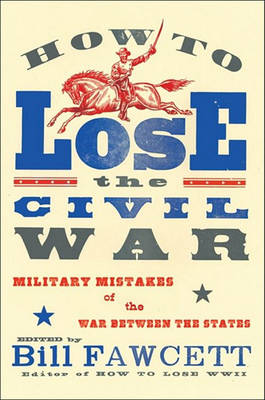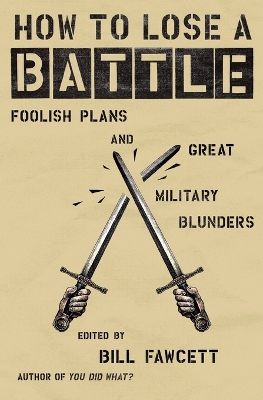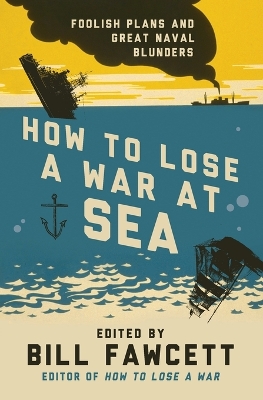How to Lose
5 total works
Few events in American history loom as large or changed the country as profoundly as the conflict between the Union and Confederacy. No war could be said to have had higher stakes or such a colorful cast of characters whose decisions endangered the continued existence of the American Experiment. With a tounge-in-cheek style "How to Lose the Civil War" chronicles the thrilling history of the many disastrous decisions made by both sides. Among the catastrophic missteps: Lee Looks Smart Beating a Stupid General - Second Battle of Bull Run; Colonel James Ripley and the Union buy inferior rifles; Lincoln's long roller coaster search for aggressive, competent Generals; General's Lee's failure to exploit the Union at its most desperate and capture Washington, DC; the many Confederate command failures of Gettysburg; and, the errors of Lincoln's contentious draft policy.
A follow up to "You Did What?", this engrossing and fact-filled compendium of great military disasters and ill-advised battle plans highlights the worst military decisions throughout history and the world. From the ancient Crusades to the modern age of chemical warfare and smart bombs, history is littered with horribly bad military ideas. Whether a result of lack of planning, miscalculations, a leader's ego, spy infiltration, or just a really stupid idea in the first place, each military defeat is fascinating to dissect. Written in a tongue-and-cheek style, "How to Lose a Battle" chronicles the vast history of these poorly thought out battle plans. With over 35 chapters of incredible military disasters, both famous (infamous) and obscure, this book is chock full of trivia, history, and fascinating looks at the world's greatest military defeats.
There had never before been a war on the scale of World War II. The sheer size of the conflict and the immense scope of a single battlefield, multiplied the effects of both brilliant and bad decisions. When millions of men are attacking in a Russian offensive or thousands of aircraft are dueling in the skies over Europe, every key decision had dramatic, and often disastrous, results. The author of "How to Lose a Battle" and "How to Lose a War" introduces the catastrophic missteps, including: Poland's lack of preparation for the Nazi invasion; Germany's failure to take Britain out of the war at Dunkirk; Russia playing Goliath to Finland's David; allied forces getting trapped for four months on the beaches of Anzio; and, Germany wasting its costly development of jet power.
This is a followup to "How to Lose a Battle", more military blunder miscellany, from Ancient Greece to modern-day, including such ill-fated plans as; Xerxes' defeat in Greece at Marathon; Alexander's invasion of India; Napoloeon's occupation of Spain; the French humiliation by Prussia in 1870; Islanwanda, massacre of a British army by the spear armed Zulus; Operation Sea Lion, the no-start Nazi invasion of the U.K.; the loss of China by Chiang Kai Shek to Mao and the communists; and, many more.
From the Spanish Armada to the modern age of aircraft carriers, history is littered with horribly bad military ideas on the open seas. Whether a result of lack of planning, miscalculations, a leader's ego, spy infiltration, or just a really stupid idea in the first place, each military defeat is fascinating to dissect. Among the catastrophic missteps: The French defeat of the British at the Battle of the Chesapeake, The rise of the American Navy during the Barbary Wars, The short life and death of Imperial Japan's Navy, The sinking of the Bismarck, Nazi megaship, Remember the Maine! How the Spanish-America War was started by lies, Admiral Nelson's greatest hits: The Nile and Trafalgar, The ANZAK disaster at Gallipoli, Germany's failed WWII campaign in the North Atlantic, Kennedy's quarantine of Cuba. With more than 35 chapters of incredible military disasters, both famous (infamous) and obscure, How to Lose a War at Sea is chock full of trivia, history, and fascinating looks at the world's greatest seafaring military defeats.




